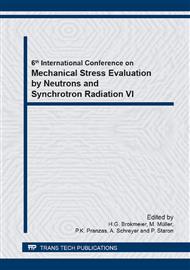p.39
p.45
p.51
p.57
p.65
p.73
p.79
p.85
p.91
The Role of Plasticity Theory on the Predicted Residual Stress Field of Weld Structures
Abstract:
Constitutive plasticity theory is commonly applied to the numerical analysis of welds in one of three ways: using an isotropic hardening model, a kinematic hardening model, or a mixed isotropic-kinematic hardening model. The choice of model is not entirely dependent on its numerical accuracy, however, as a lack of empirical data will often necessitate the use of a specific approach. The present paper seeks to identify the accuracy of each formalism through direct comparison of the predicted and actual post-weld residual stress field developed in a three-pass 316LN stainless steel slot weldment. From these comparisons, it is clear that while the isotropic hardening model tends to noticeably over-predict and the kinematic hardening model slightly under-predict the residual post-weld stress field, the results using a mixed hardening model are quantitatively accurate. Even though the kinematic hardening model generally provides more accurate results when compared to an isotropic hardening formalism, the latter might be a more appealing choice to engineers requiring a conservative design regarding weld residual stress.
Info:
Periodical:
Pages:
65-71
Citation:
Online since:
November 2013
Price:
Сopyright:
© 2014 Trans Tech Publications Ltd. All Rights Reserved
Share:
Citation:


